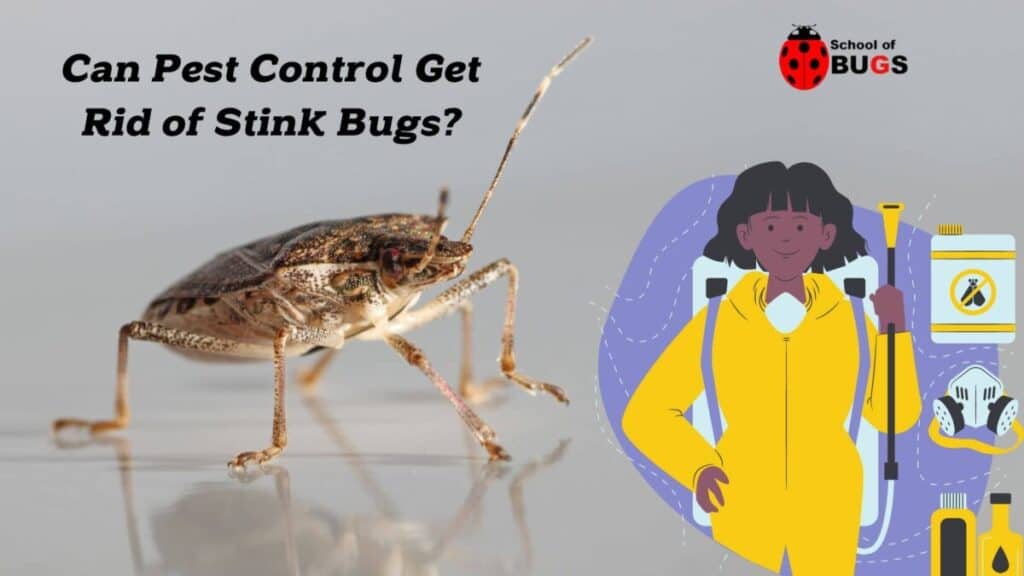
Stink bugs are the worst uninvited guests in a home, and getting rid of them can be a nuisance, especially if you don’t know what’s luring them in. Here’s everything you need to know about stink bug infestations and what pest control can do about it.
Pest control can tackle stink bugs with insecticides like Avesta CS, Bifen IT, Cyper WSP, and Demon WP, effectively spraying to eliminate stink bugs and discourage more from coming to your house.
The rest of this article will cover the following topics:
- What brings stink bugs in?
- What damage do stink bugs cause?
- How do you know you have a problem?
- What can pest control do about stink bugs?
What Causes a Stink Bug Infestation?
Stink bugs are well-known for the terrible smell they bring with them everywhere they go. With the Brown Marmorated Stink Bug taking a firm place among the most irritating US pests, accidentally introduced in the late ‘90s, stink bugs have become a common sight around the country and a nightmare for farmers and homeowners alike.
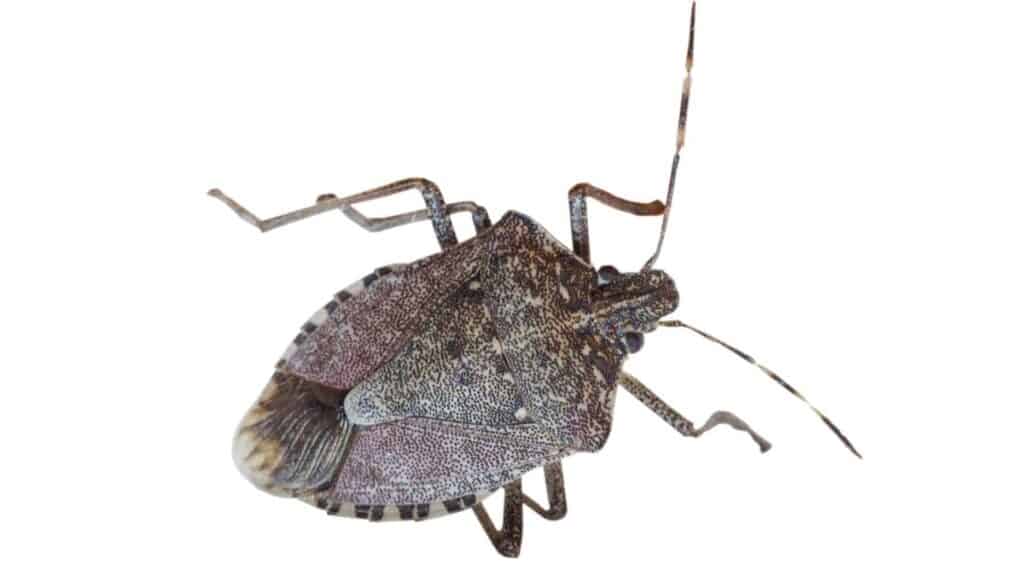
Generally, stink bug season begins in the fall when the temperatures drop and stink bugs seek warmth by congregating on the sides of homes.
In particular, they prefer the west and south side of a building so that they can take advantage of the afternoon sun.
Once they’ve settled in on the side of a home, some stink bugs will inevitably find their way through crevices and gaps to the interior.
The amusing (but still extremely frustrating) truth of the matter is that stink bugs don’t want to be inside your home at all.
When they enter, they go dormant until “spring” arrives—a biological mechanism that is unfortunately triggered every time there’s a warm winter day.
That’s why stink bug activity seems to come in waves on certain days and be virtually nonexistent when the weather is colder.
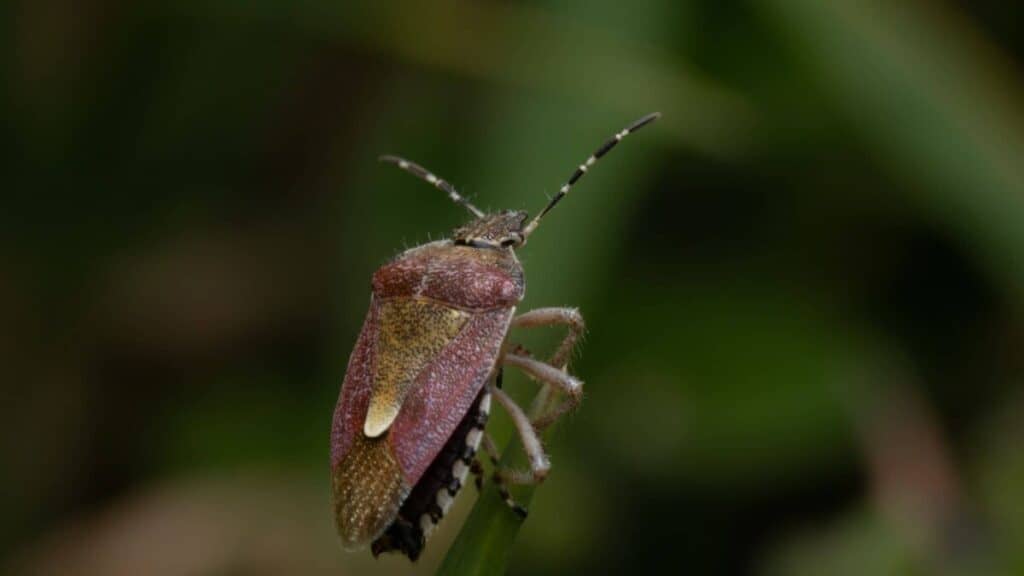
In light of this accidental invasion, you might be wondering “Why me?” Generally, stink bugs will pick a building to congregate on based on the availability of food around the home.
Stink bugs feed on green vegetation and shrubbery, so if you’ve got the greenest house on the block, then you’re more likely to have to deal with pesky stink bugs working their way inside.
You’re also more likely to encourage a stink bug invasion if you tend to leave your patio lights on overnight.
The light attracts the stink bugs, making it more likely that their congregation habits will be your headache to handle.
Any thin gaps in your walls, door frames, windows, vents, or pipes are access points for stink bugs, and they’ll usually enter your home seeking warmth.
Once a few stink bugs are inside, their pheromones can be detected by others, encouraging them all to enter your home seeking warmth.
These pheromones are attractive to other stink bugs for two reasons: breeding and congregating. It’s a way for a stink bug to communicate with others to say, “Hey, I’ve found a great warm place to hide.”
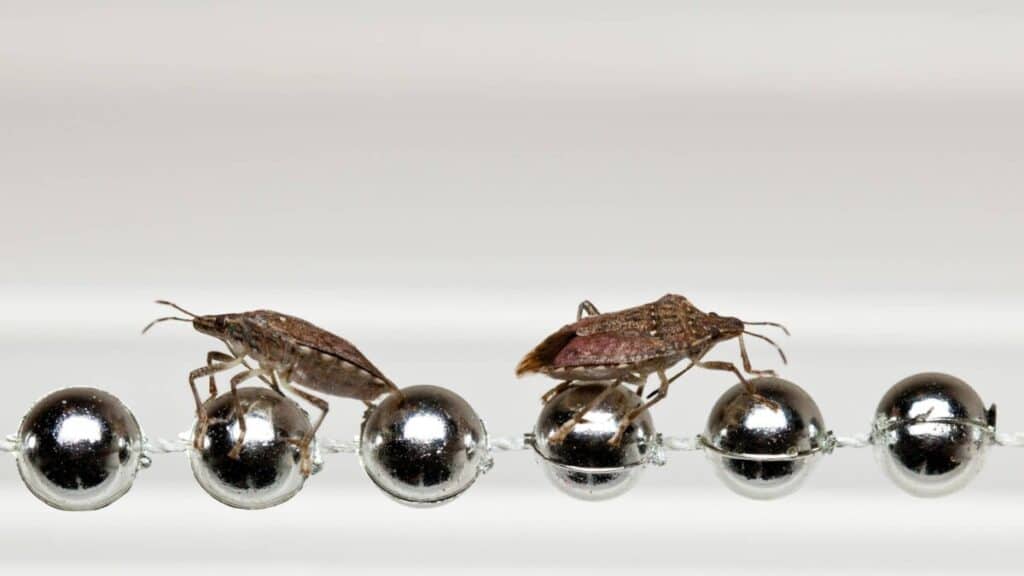
What Damage Do Stink Bugs Cause?
Stink bugs are almost universally hated by homeowners for one simple reason: the foul odor they produce.
These odors not only stink up your home, but they can stain into walls, curtains, and other fabrics, which is a headache you never want to deal with.
Everywhere they go, stink bugs leave behind yellow-brown stains on fabrics, furniture, couches, and carpets.
Generally, stink bugs will drop their stink bombs when they feel threated, a chemical deterrent for predators.

These odors are not toxic to humans or pets, and stink bugs do not bite or sting either. You should be wary of allergic reactions, however, since these can be quite severe.
If you’re a plant lover, then you have good reason to worry about the presence of these pests. The aforementioned brown marmorated stink bugs can eat over 100 types of plants, devastating fruits and veggies in their wake.
The plants also play host to their eggs, with stink bugs depositing 20-30 eggs, which can only serve to exacerbate an infestation.
How to Tell if Your Home Is at Risk
Stink bugs aren’t exactly subtle about their presence, and if you see a gathering of stink bugs outside, then the interior of your home is also at risk.
If there’s a flaw, crack, or crevice anywhere along the exterior of your home (particularly the south and east side), then stink bugs can get into your home, procreate, and wreak havoc.
You’ll usually start to get an inkling that something’s amiss when you spot bugs in your home, yellow-brown stains on your fabrics or damage to your plants.
Stink bugs may hide around baseboards, door trims, windows, and exhaust fans. Pretty much anywhere that reflects heat is a common gathering place for stink bugs to overwinter.
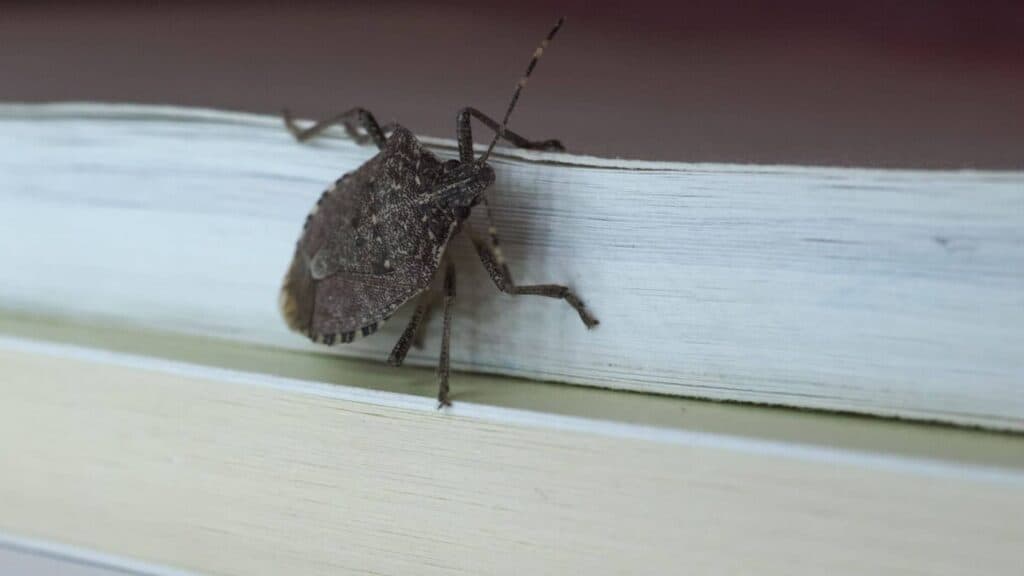
What Can Pest Control Do about Stink Bugs?
While stink bugs don’t pose any threat to humans unless an allergic reaction occurs, it’s not exactly pleasant to think about sharing your home with hundreds, if not thousands, of stink bugs and the ensuing damage they cause.
A professional pest control company has the knowledge, expertise, and resources to eliminate a stink bug infestation and arm you with the information you need to avoid an infestation next winter.
Pest control experts use the following methods to get rid of stink bugs from your home:
- Identification
- Inspection
- Treatment
- Prevention
Identification
First, a pest control expert will visit your home to identify the pest you’re encountering. Ensuring that the congregating pests are actually stink bugs and verifying the species is important in ensuring your home gets the customized treatment it needs to address the infestation.
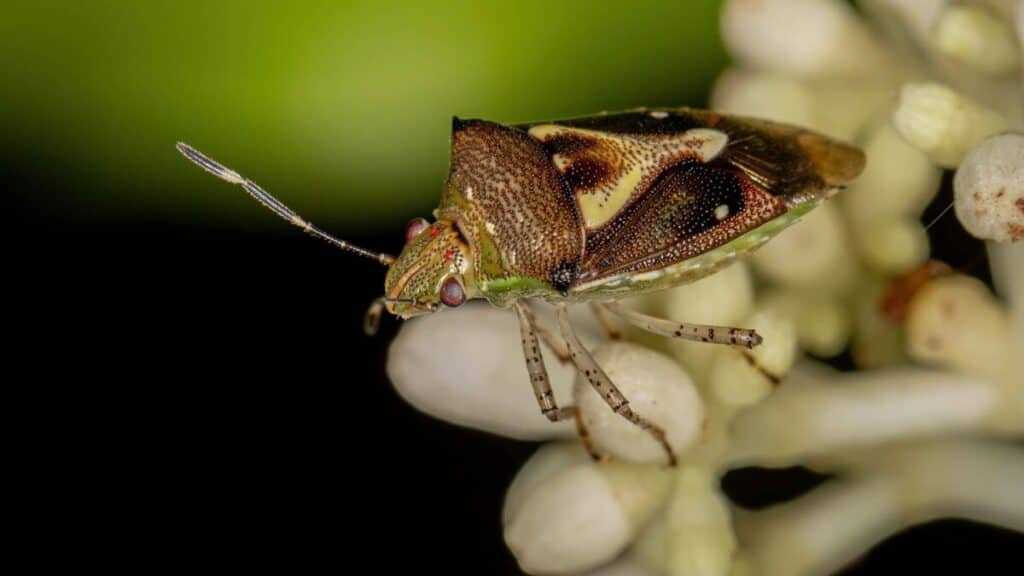
Inspection
Next, a professional will inspect for the presence of stink bugs to determine the extent of the problem. Usually, it’s not hard to spot stink bugs since they’re much bigger than many other pests.
Inspectors will check your gardens and patios outside, as well as checking your attic, fabrics, and other places without much foot traffic indoors.
Treatment
Next, pest control will start a course of treatment based on the identification and inspection of stink bugs, usually consisting of insecticides applied outside and inside.
Pest control experts are familiar with the safe use of commercial-grade pesticides, applying treatment where necessary.
For a perimeter treatment, pest control will spray the insecticide 3 feet up and 3 feet out from the foundation, also covering window frames, door frames, eaves, rain gutters, soffits, and electric plumbing.
Next, the entirety of the lawn will be sprayed with a fan spray insecticide, uniformly covering and protecting the area from stink bug activity.
A perimeter treatment of outdoor pesticide prevents stink bugs from congregating and entering your home through cracks and crevices, while an indoor treatment to points of entry ensures that any stink bugs getting inside will be killed.

Inside, pest control experts will use insecticidal dust like D-Fense Dust to get deep into cracks and crevices where stink bugs like to hide.
Depending on the extent of the problem, pest control experts will also apply a chemical aerosol to kill stink bugs directly in flight or congregated on the walls.
These treatments are designed to eliminate stink bugs where they’re hiding and prevent them from thriving inside a home.
Prevention
Lastly, a pest control company will help you caulk, foam, or seal points of entry to stop stink bugs from getting into your home.
In addition, they may offer quarterly services to spray the exterior of your home and yard to prevent stink bugs from congregating there.
A combination of preventative treatments, sealing points of access, and direct contact spray can handle a stink bug infestation, and enlisting the help of a pest control company is always wise to get rid of stink bugs for good and make sure they don’t come back next season.
Remember, stink bugs congregate and get into a home as a result of overwintering behavior. If your home isn’t protected by insecticides and mechanically sealed from invasion, then you’re going to have stink bug problems again.
It’s important to consider your location as well; if you live somewhere prone to stink bugs, then it’s a wise idea to contact your local pest control company to see what preventative measures and quarterly treatments they can offer you.
It’s always best to tackle the problem of stink bugs before they become a nightmare inside your home, and a pest control company is your best resources to ensure you’re stopping a stink bug invasion before it even happens.
Final Thoughts
Stink bugs are a nuisance pest that can congregate and enter your home through cracks and crevices, usually during the winter. Seeking shelter, they can quickly breed, numbering in the thousands if left unchecked.
As with most other kinds of pest control solutions, prevention is always the easiest route to take to make sure you don’t have to deal with the stink bug menace during the winter season.
Alright, that’s it for this article, here are a few hand-selected articles that you might also find interesting reads:
Pest Control or Exterminator: Seven Key Things You Need to Know Before ChoosingIs Pest Control Worth It – Pros and Cons With Real Examples
Is Pest Control Necessary? My Experience and Conclusion
Recent Posts
Tiny Black Bugs in Bathroom NO WINGS: What They Are and What to Do!
Finding tiny black bugs in your bathroom can be uncomfortable, to say the least. Especially if they are persistent, or they appear in very large numbers, which they often like to do. When it...
Tiny Black Bugs in Plant Soil - What Are They & What To Do About It
A short horror story: You get a new houseplant. You do your best to take care of it. You’ve ensured that it has the right soil, the right amount of sun, it gets enough water. And then one day, you...

